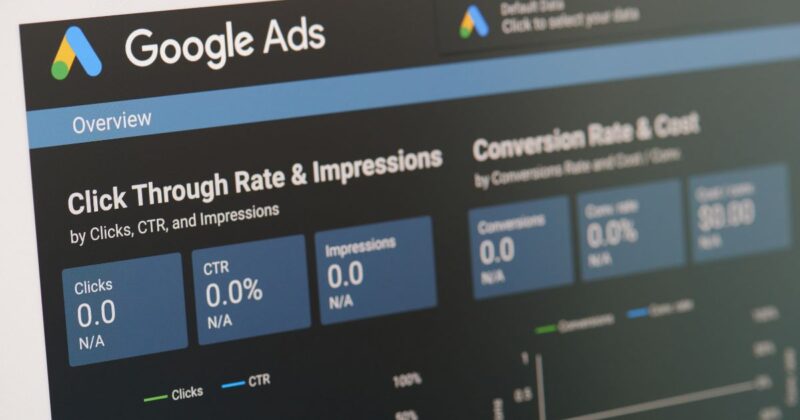Creating The Ideal Google Ads Campaign Structure
In the competitive landscape of digital marketing, the structure of your Google Ads campaigns plays a critical role in determining the success of your advertising efforts. A well-organized and strategic Google Ads campaign structure is essential for maximizing your return on investment (ROI), enhancing ad performance, and achieving your business goals. Whether you are an experienced marketer or a newcomer to the platform, mastering the art of creating an ideal campaign structure can make a significant difference in your results.
Why Google Ads Campaign Structure Matters
Before we delve into the specifics of how to create the perfect campaign structure, it’s important to understand why this structure is so vital. The Google Ads campaign structure directly impacts how your ads are displayed, how your budget is allocated, and how effectively your ads reach your target audience. A poorly structured campaign can lead to wasted spending, irrelevant clicks, and low conversion rates. On the other hand, a well-structured campaign ensures that your ads are seen by the right people, at the right time, with the right message.
Benefits of a Well-Structured Google Ads Campaign
- Improved Ad Relevance: A clear and organized structure allows you to create highly relevant ads that align closely with user intent. This relevance leads to higher click-through rates (CTR) and better Quality Scores, which can lower your cost-per-click (CPC).
- Efficient Budget Allocation: By segmenting your campaigns and ad groups effectively, you can allocate your budget more wisely, directing more resources to high-performing areas while minimizing waste on underperforming segments.
- Enhanced Reporting and Optimization: A well-structured campaign simplifies the process of analyzing performance data, making it easier to identify trends, spot opportunities for improvement, and make data-driven optimization decisions.
- Better Control and Flexibility: With a logical and coherent campaign structure, you gain greater control over your bidding, keywords, and ad placements, allowing for more precise adjustments in response to market changes and performance metrics.

Understanding the Basics of Google Ads Campaign Structure
A Google Ads campaign structure is composed of three primary components: campaigns, ad groups, and keywords. Each of these elements plays a crucial role in determining how your ads are displayed, who sees them, and how well they perform.
Campaigns: The Foundation of Your Structure
Campaigns are the highest level within the Google Ads campaign structure. Each campaign should be aligned with a specific marketing goal or objective, such as brand awareness, lead generation, or e-commerce sales. Within a campaign, you can set your daily budget, bidding strategy, geographic targeting, and more.
Types of Google Ads Campaigns
- Search Campaigns: These campaigns display text ads on Google search results pages when users search for keywords related to your business. Search campaigns are ideal for capturing high-intent users who are actively looking for your products or services.
- Display Campaigns: Display campaigns show image or video ads across the Google Display Network, reaching users as they browse various websites, use apps, or watch videos. These campaigns are effective for building brand awareness and retargeting users who have interacted with your brand.
- Shopping Campaigns: Designed for e-commerce businesses, Shopping campaigns showcase your products with images, prices, and descriptions directly in Google search results. These campaigns are excellent for driving online sales and showcasing your product catalog.
- Video Campaigns: Video campaigns allow you to run ads on YouTube and other Google partner sites. They are particularly effective for brand storytelling and engaging users through rich, multimedia content.
- App Campaigns: App campaigns promote your mobile app across Google Search, the Play Store, YouTube, and the Display Network. They are optimized for driving app installs and increasing user engagement.
Ad Groups: Organizing Your Ads
Within each campaign, you will have multiple ad groups. Ad groups are used to organize your ads based on specific themes, products, or services. Each ad group contains a set of related keywords and ads that are tailored to those keywords. The organization of your ad groups is critical to maintaining relevance and ensuring that your ads are highly targeted to the user’s search queries.
Best Practices for Ad Groups
- Keep Ad Groups Tight: To maintain high relevance, limit the number of keywords per ad group. Aim for 10-20 closely related keywords in each ad group to ensure that your ads are tightly aligned with the user’s search intent.
- Use SKAGs (Single Keyword Ad Groups): For even greater control and precision, consider using Single Keyword Ad Groups (SKAGs), where each ad group contains only one keyword. This approach allows for hyper-targeted ads and more accurate bidding, which can lead to improved performance.
- Align Ad Copy with Keywords: Ensure that the ad copy in each ad group closely matches the keywords. This alignment increases the likelihood that your ads will resonate with users, improving your CTR and overall ad effectiveness.

Keywords: The Building Blocks of Your Campaigns
Keywords are the foundation of your Google Ads campaign structure. They determine when your ads are triggered based on user search queries. Choosing the right keywords and organizing them effectively is essential for the success of your campaigns.
Keyword Match Types
- Broad Match: This match type allows your ads to be triggered by searches that include variations of your keywords, including synonyms and related terms. While broad match offers the widest reach, it can also lead to irrelevant clicks if not carefully managed.
- Phrase Match: Ads are triggered when the search query includes the exact phrase or a close variation of your keyword. Phrase match offers a balance between reach and relevance, allowing for more targeted ad placements than broad match.
- Exact Match: Ads are triggered only when the search query matches the keyword exactly or is a close variation. Exact match provides the highest level of control, ensuring that your ads are shown only for the most relevant searches.
- Negative Keywords: Negative keywords are used to exclude certain terms from triggering your ads. By adding negative keywords to your campaigns, you can prevent your ads from appearing in irrelevant searches, saving your budget for more valuable clicks.
Structuring Your Google Ads Campaigns for Success
Now that we’ve covered the basics of the Google Ads campaign structure, let’s explore how to organize these components for optimal performance.
Step 1: Define Your Campaign Objectives
The first step in creating an ideal campaign structure is to clearly define your objectives. What do you want to achieve with your Google Ads campaigns? Are you looking to drive website traffic, generate leads, increase online sales, or build brand awareness? Your objectives will guide the type of campaigns you create and how you structure them.
Step 2: Segment Your Campaigns by Objective
Once your objectives are clear, segment your campaigns based on those objectives. For example, if you run an e-commerce business, you might create separate campaigns for brand awareness, different product categories, and retargeting. This segmentation allows you to tailor your ads, budgets, and bidding strategies to each specific goal.
Step 3: Organize Ad Groups by Theme
Within each campaign, organize your ad groups by theme. For instance, if you have a campaign focused on promoting a clothing brand, you could create ad groups for different product categories such as “Men’s Clothing,” “Women’s Clothing,” and “Accessories.” This structure ensures that your ads are highly relevant to the user’s search intent and that your messaging is consistent across similar products or services.
Step 4: Use a Consistent Naming Convention
A consistent naming convention for your campaigns and ad groups is essential for efficient management and reporting. Include key details such as the objective, product, or audience in the campaign name. For example, a campaign name like “Brand Awareness – Men’s Clothing – US” provides clear information about the campaign’s focus and target audience.
Step 5: Implement Tight Keyword Grouping
As mentioned earlier, keeping your ad groups tightly themed with closely related keywords is crucial for maintaining relevance and improving performance. This practice not only enhances your Quality Score but also makes it easier to manage your keywords and ads effectively. Avoid adding too many keywords to a single ad group, as this can dilute the relevance of your ads.
Step 6: Write Compelling Ad Copy
Your ad copy should be directly aligned with the keywords in each ad group and should speak to the user’s needs and search intent. Use the main keyword in the headline and description to improve ad relevance and CTR. Additionally, consider using dynamic keyword insertion (DKI) to automatically update your ads with the user’s search query, further enhancing relevance.
Step 7: Optimize Your Landing Pages
Your landing pages are a critical component of your Google Ads campaign structure. Ensure that your landing pages are highly relevant to the keywords and ad copy, provide a seamless user experience, and include a clear and compelling call-to-action (CTA). A well-optimized landing page can significantly improve your conversion rates and overall campaign performance.
Advanced Strategies for Google Ads Campaign Structure
For those looking to take their Google Ads campaign structure to the next level, consider implementing the following advanced strategies:
Utilize Ad Extensions
Ad extensions provide additional information and increase the visibility of your ads. Extensions such as site links, callouts, structured snippets, and call extensions can enhance your ads and improve your CTR. By providing users with more reasons to click on your ads, ad extensions can help you achieve better results with your campaigns.
Leverage Audience Targeting
Audience targeting allows you to reach specific segments of users based on their behavior, interests, demographics, and more. By layering audience targeting onto your campaigns, you can tailor your ads to specific groups, increasing relevance and improving performance. For example, you might target in-market audiences who are actively searching for products or services similar to yours or use remarketing lists to reach users who have previously interacted with your website.
Test Different Bidding Strategies
Google Ads offers various bidding strategies, including manual CPC, target CPA (cost-per-acquisition), and maximize conversions. Testing different bidding strategies can help you find the one that aligns best with your campaign objectives and delivers the best results. For example, if your goal is to drive conversions, you might test target CPA bidding to see if it helps you achieve a more consistent cost per conversion.
Monitor and Adjust Campaign Settings
Regularly reviewing and adjusting your campaign settings is essential for maintaining an effective Google Ads campaign structure. Key settings to monitor include location targeting, ad scheduling, device targeting, and language settings. By making adjustments based on performance data, you can refine your campaign structure to improve results and adapt to changing market conditions.
Measuring the Success of Your Google Ads Campaign Structure
Once your Google Ads campaign structure is in place, it’s crucial to measure its success and make ongoing adjustments as needed. Monitoring key performance indicators (KPIs) such as CTR, conversion rate, cost-per-click (CPC), and ROI will provide insights into how well your structure is performing.
Analyze Performance Data
Regular analysis of your campaign performance data is vital for identifying trends, spotting opportunities, and making informed decisions. Look for patterns in which ad groups, keywords, and ads are performing well, and identify any areas that may require optimization. Use this data to refine your campaign structure and make data-driven decisions that enhance overall performance.
Conduct A/B Testing
A/B testing, also known as split testing, is a powerful method for experimenting with different elements of your campaign structure, such as ad copy, keywords, landing pages, and bidding strategies. By running A/B tests, you can determine which variations perform better and use these insights to optimize your campaigns. For example, you might test two different ad headlines to see which one generates a higher CTR or compare the performance of different landing pages to determine which one leads to more conversions.
Refine Your Structure Over Time
A successful Google Ads campaign structure is not a one-time setup but an ongoing process that requires continuous refinement. As you gather more data and gain insights into what works best for your business, you should make adjustments to your structure to keep it optimized. This might involve reorganizing ad groups, updating keywords, revising ad copy, or adjusting your bidding strategies.

Conclusion: Building a Strong Foundation for Success
Creating an effective Google Ads campaign structure is essential for achieving success in your digital marketing efforts. By carefully organizing your campaigns, ad groups, and keywords, and continuously optimizing based on performance data, you can maximize your ROI and reach your business goals more efficiently. Whether you’re new to Google Ads or looking to fine-tune your existing campaigns, a well-structured approach sets the stage for sustained success.
If you’re looking for a partner who understands the intricacies of Google Ads and can help you navigate the complexities of digital marketing, Idea Marketing Group is here to assist. We don’t just build campaigns—we build strategies that align with your unique business objectives. Our team brings years of experience and a passion for helping businesses thrive online.
Let us help you take your Google Ads campaigns to the next level. At Idea Marketing Group, we specialize in creating custom marketing solutions that deliver real results. Ready to see how a well-crafted Google Ads campaign structure can drive your business forward? Discover more about our services and let’s start building your success story together.

